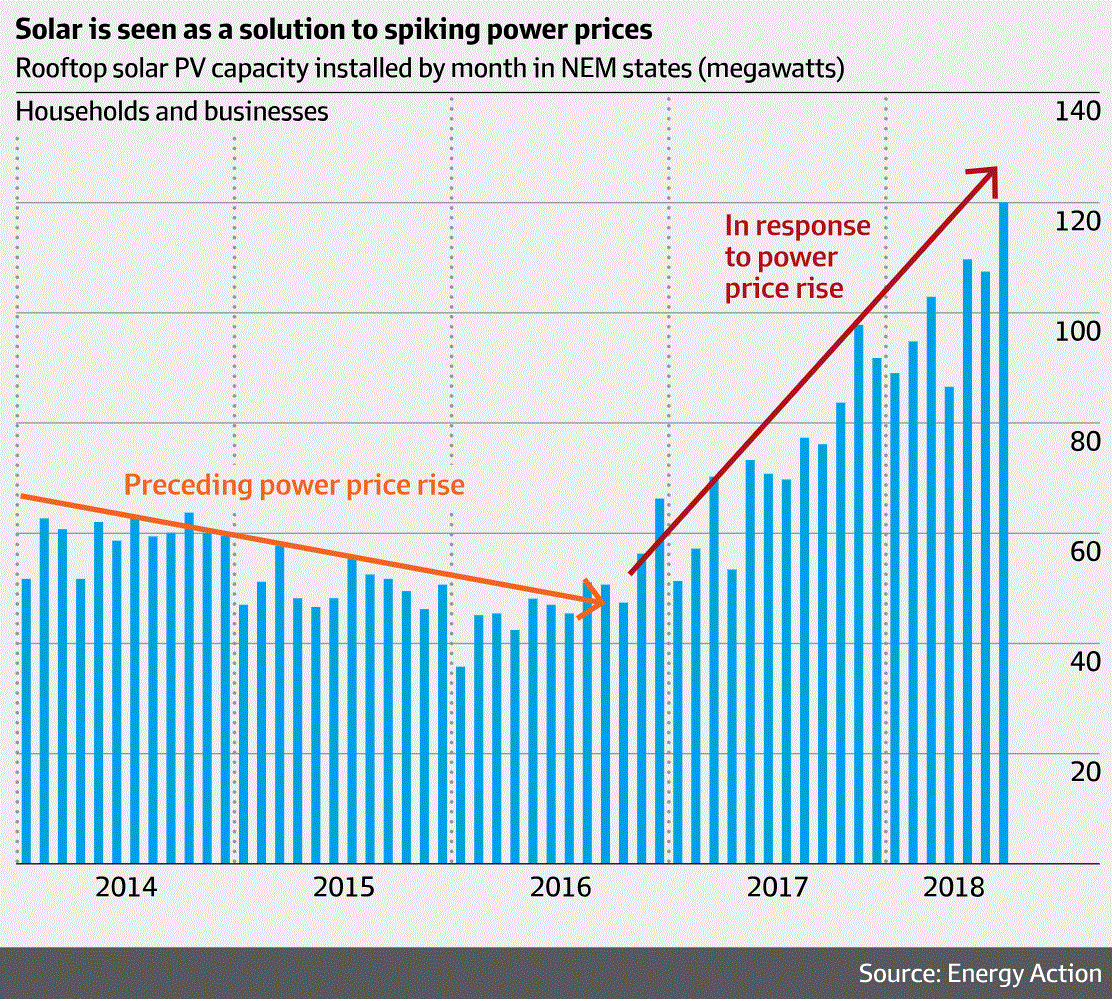At The Australian PM Morrison’s new energy man, Angus Taylor, speaks:
“I’m focused on getting prices down while I keep the lights on. I’ve got one KPI. I’ve got one goal,” he told The Australian.
…The key points of the new Morrison-Taylor plan were flagged by Mr Turnbull last week after the collapse of the NEG amid a partyroom revolt.
The price safety net is based on the Australian Competition & Consumer Commission’s proposed default market price to replace unregulated standing offers. This was expected to save households $183 to $416 a year and typical small businesses $561 to $1457.
To boost competition and supply, the government would push on with its plan to underwrite low- cost, “stable”-generation capacity for commercial and industrial users. It would also implement the ACCC’s recommendation to cap the share of generation capacity in each market, limiting the growth of big players.
Mr Taylor said the government would tackle price gouging by network businesses and energy wholesalers. Network businesses would lose the power to appeal regulators’ rulings based on “limited merits”, while forced divestment would be a “big stick” to guard against anti-competitive behaviour by energy wholesalers.
“The power to divest is obviously a last resort,” Mr Taylor will say in his speech today. “The better answer is that industry works with us to get wholesale prices down.”
Those measures are mostly worthwhile but, again, where is the real and largest culprit, the gas cartel? That’s the key input into gas and power price spikes yet there is still no mention of it. It’s like it’s got the power of invisibility.
The same can said for the critics of the Morrison plan, via The Guardian:
While the Morrison government has identified lowering power prices as a key early priority, a new analysis says wholesale prices will almost halve over the next four years because of the technology many Coalition conservatives oppose – renewables.
The latest renewable energy index compiled by Green Energy Markets confirms analysis by the Energy Security Board that wholesale electricity prices are on the way down because of an addition of 7,200 megawatts of extra large-scale supply from renewable energy.
Tristan Edis from Green Energy Markets says the political debate in Canberra is lagging behind practical developments in the national electricity market. The national energy guarantee was scuppered in part because government conservatives were concerned the mechanism didn’t do enough to reduce power prices, and because of claims that renewables were inflating power bills.
“What I think is extraordinary given recent political events is that we’ve actually turned the corner on wholesale electricity prices and they’re now headed downward and will continue to decline substantially over the next few years,” Edis told Guardian Australia. “This doesn’t seem to have sunken in at all in our political debate.”
The new analysis charts movements in prices in the energy market. It says prices began to rise when large amounts of supply were withdrawn from the market in South Australia with the closure of the Northern power station, and because of the closure of the Hazelwood plant in Victoria.
It says new investment in large-scale renewable energy projects during that period had stalled because of Tony Abbott’s efforts to wind back the renewable energy target. “It was only after prices began spiking upwards with the announced closure of Hazelwood that we saw significant commitments to construct new large-scale renewable energy supply.”
The analysis says price reductions have followed more renewable projects coming on stream. “Prices have since continued to decline in anticipation of increasing amounts of renewable energy supply reaching construction completion and contributing power to the grid.”
Sigh. The price spikes did trigger massive new renewable investment because they acted like a private carbon price on steroids. AFR has the chart:

But the price spikes did not come from a drought in renewable investment nor the closure of coal plants. They mostly came from the spike in gas prices. Power prices are now falling mostly because those gas prices were halved by the Australian Domestic Gas Security Mechanism. Remember it is gas that most often sets the marginal cost of power in the NEM.
It is important to get this right because the future grid will remain at risk of price spikes if the gas price rockets again. And it will if either the Asian gas price jumps, LNG imports are introduced or the Australian dollar falls.
Until massive new power storage is rolled out, we need domestic gas reservation. Then afterwards to keep the gas price low for industry anyway.

